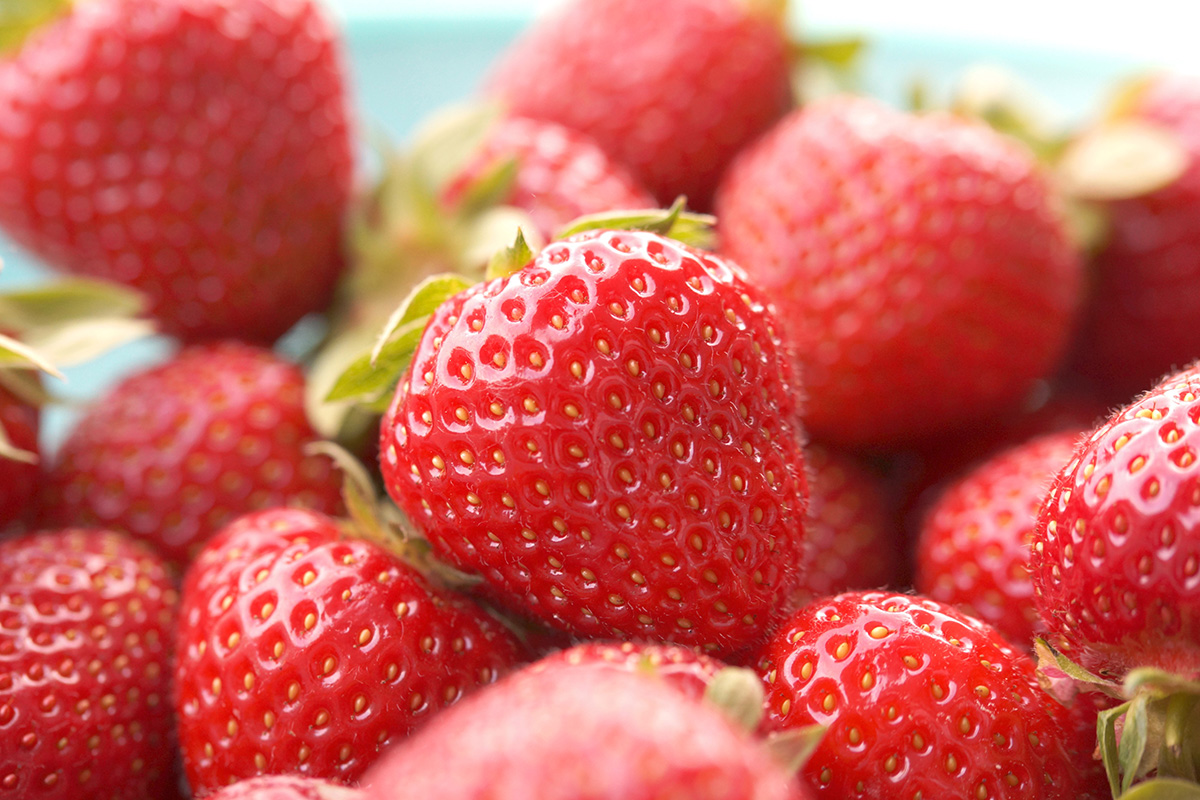
All The Juicy Info You Need To Know About Sweet Strawberries
Strawberries are more than just a tasty summer treat; they are a fascinating fruit with a rich history. There is a range of varieties that each offer unique flavours and characteristics. From the traditional garden strawberries we all know and love to heirloom and hybrid varieties that surprise us with their diverse tastes and appearances, there is a lot to explore about this beloved fruit. In this blog, we’ll delve into the different types of strawberries, their cultivation, health benefits, and even some fun facts that might surprise you. Whether you’re a strawberry aficionado or just curious about this popular berry, join us as we uncover the juicy details about strawberries.
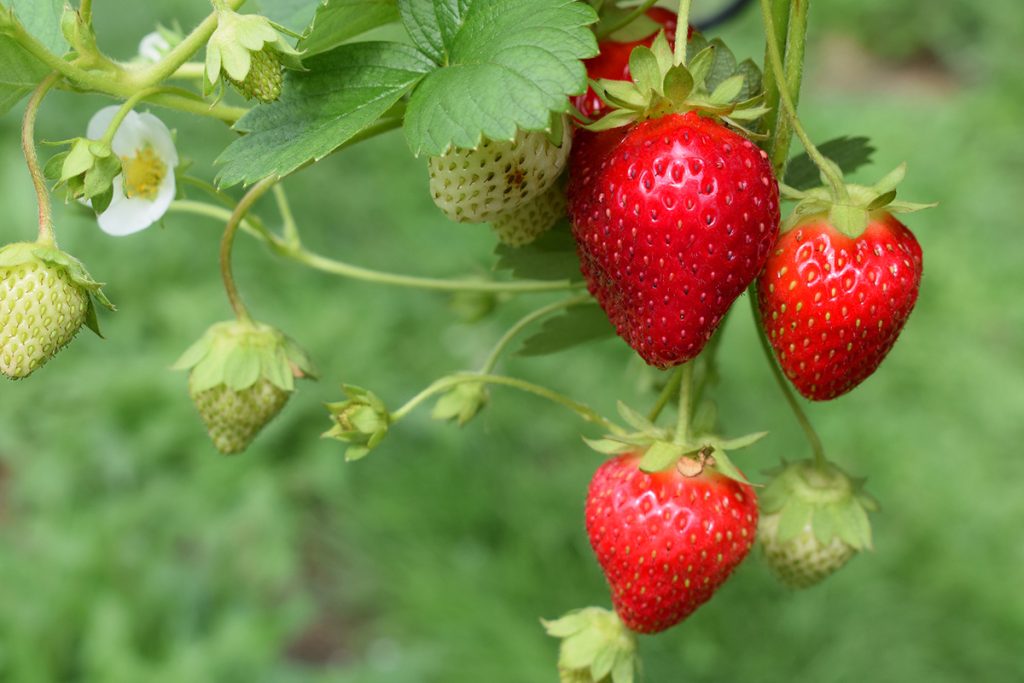
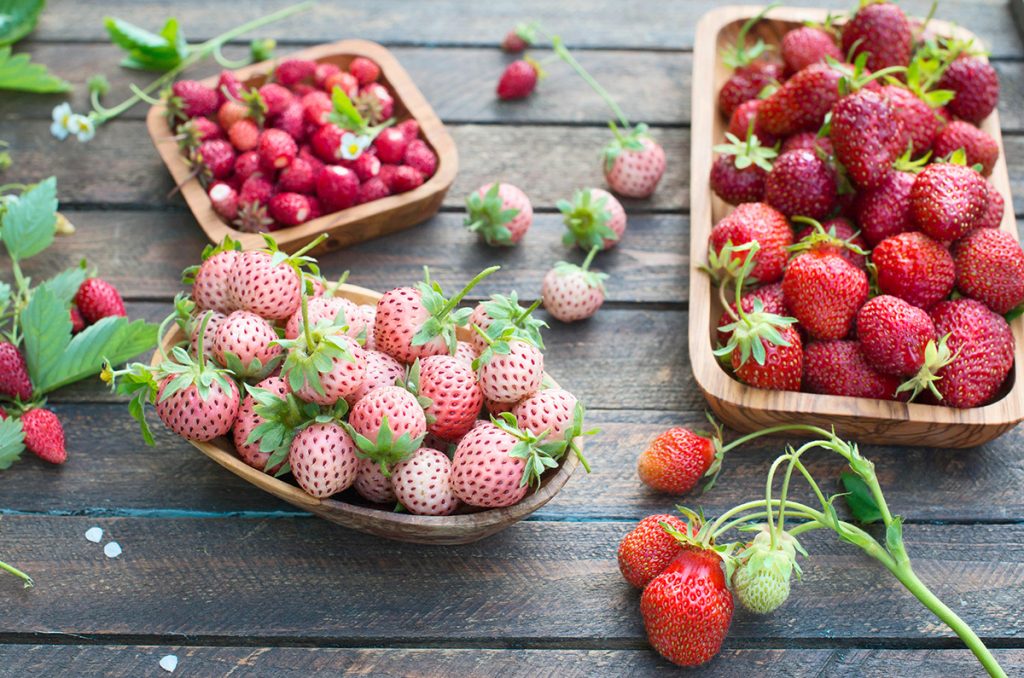

Table of Contents
June Bearing vs. Everbearing
When it comes to strawberries, two primary types stand out: June-bearing and Everbearing. June-bearing strawberries are the classic choice for many gardeners and strawberry preserving enthusiasts. These plants produce a large harvest each year, typically in June (late spring to early summer), hence the name. The berries tend to be large, juicy, and packed with that quintessential sweet strawberry flavor. Ideal for making jams, pies, and other preserves, June-bearing strawberries provide an abundant, concentrated yield, making them perfect for those who enjoy a seasonally intensive harvest. You will have a few berries that from July until frost, but not in abundance as the initial seasonal crop.
On the other hand, Everbearing and Everbearing Day-Neutral strawberries offer a different kind of delight. These plants produce berries all season long, starting in late spring until frost in autumn. While the individual harvests may be smaller compared to June-bearing varieties, the extended fruiting period means you can enjoy fresh strawberries for a longer time. Some everbearing varieties may take a pause in fruiting from the stresses of the hottest part of the summer, think august heat waves. But once temperatures lower a bit, these plants will start to produce flowers and fruit well into the frost of autumn. Everbearing strawberries are ideal for those who love to have a steady supply of fresh berries for snacking, adding to cereals, or incorporating into a variety of dishes over several months. Their continuous production makes them a favourite for home gardeners looking for a consistent taste of summer.
Planting and Care
Planting and caring for strawberries is a rewarding endeavour that can yield a bountiful harvest with just a little attention and care. When it comes to planting, selecting a sunny spot with well-draining soil is key. Whether you opt for traditional garden beds or containers, ensure that the soil is rich in organic matter and has a slightly acidic pH level. June-bearing plants prefer to be planted in garden beds allowing them to create a productive patch of plants. When first planting June-bearing plants, space the roots about 50 cm (20”) apart in rows 90 cm (36”) apart and water well after planting. In summer the runners will develop and root freely, eventually forming a matted row of plants about 60 cm (24”) wide. During the first growth year remove all blossoms and fruit stems, so that the plant puts all its energy into getting established and setting out new roots. Then the following June you will be rewarded with an amazing crop of berries.
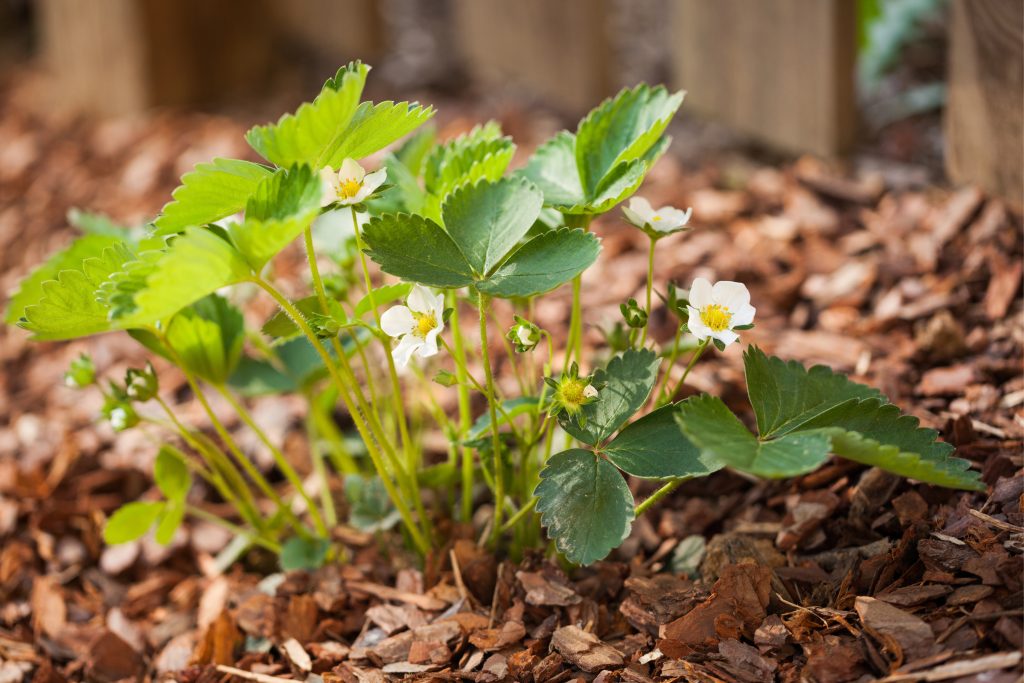
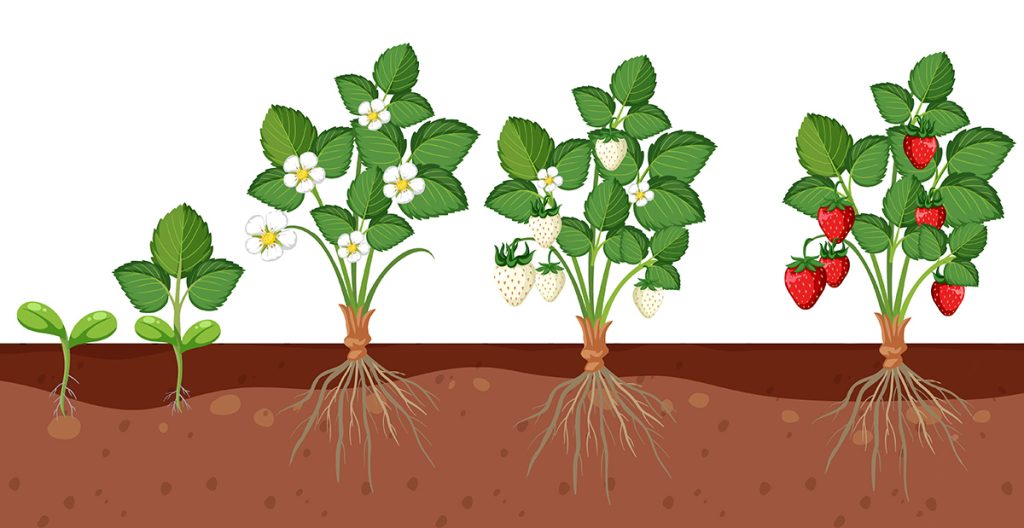
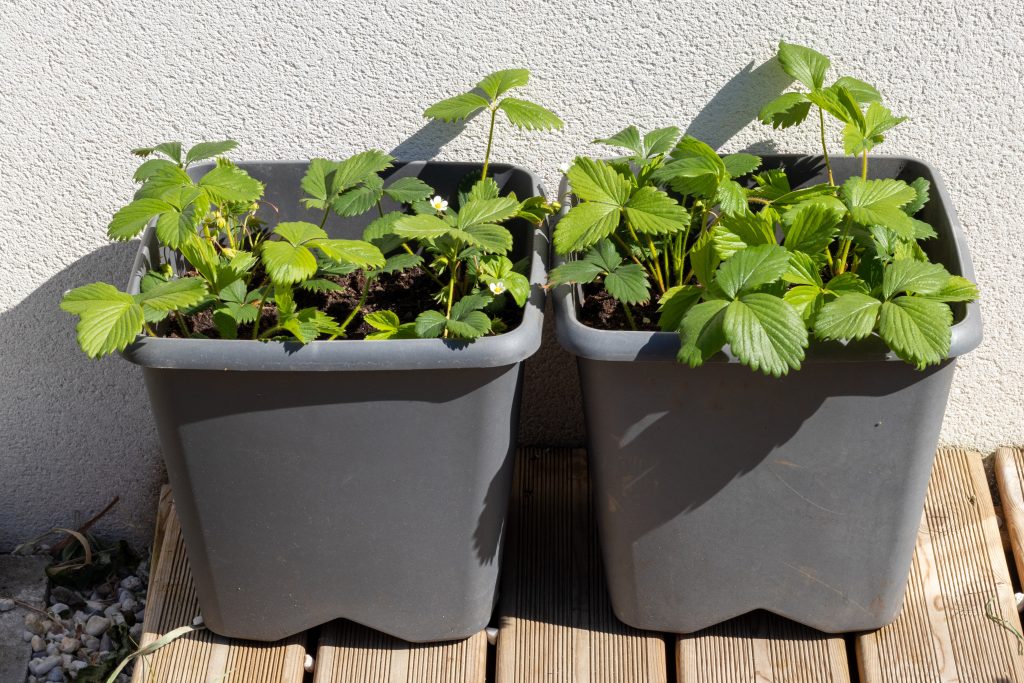
Everbearing plants can be planted in hanging baskets, patio planters or garden beds, we like to use them as edging in raised beds too. When first planting everbearing varieties in garden beds, plant the roots in 2-3 rows that are 30 cm (12”) apart. Space each plant within a row about 50 cm (20”) apart. There should a 60 cm (24”) wide path between each bed of 2-3 rows. Remove any runners to maintain the plants as large, single plants. Remove all blossoms for 6 weeks after initial planting, then allow flowers to develop into fruit.
Position the roots with the crown (where the roots meet the shoots) just above the soil level. Once planted, keep the soil consistently moist, especially during the critical early stages of growth. Mulching around the plants can help retain moisture, suppress weeds, and protect the roots. Regular watering, especially during dry spells, is essential to promote healthy growth and fruit development. One the plants are established and new roots have developed, 6-8 weeks after planting, you can fertilize the plants every few weeks with a balanced fertilizer to provide the nutrients they need to thrive. In the autumn the berry plants will go dormant, so when spring rolls around, trim back any brown leaves and you will soon see new leaves emerging. With proper care, your strawberry plants will reward you with plump, juicy berries season after season.
Our go-to Varieties for strawberries
Albion Strawberry
Albion strawberries stand out in the world of berries for their exquisite flavour profile, making them a sought-after choice among fruit enthusiasts. This day-neutral everbearing strawberry, offers a delightful balance of sweetness and tartness, accompanied by rich aromatics that elevates any culinary creation. Their growing versatility further enhances their appeal, thriving in various climates and soil conditions. From garden beds to containers, Albion strawberries adapt well to different growing styles, rewarding you with abundant yields of plump, juicy berries. You can enjoy an extended harvest season, from late spring through fall, ensuring a steady supply of delectable fruits. When it’s time for harvesting, Albion strawberries boast a vibrant red hue, signalling their peak ripeness and maximum flavour. Whether enjoyed fresh off the vine or incorporated into jams, pies, and salads, Albion strawberries captivate taste buds with their full flavour and versatility. Hardy to zone 4.
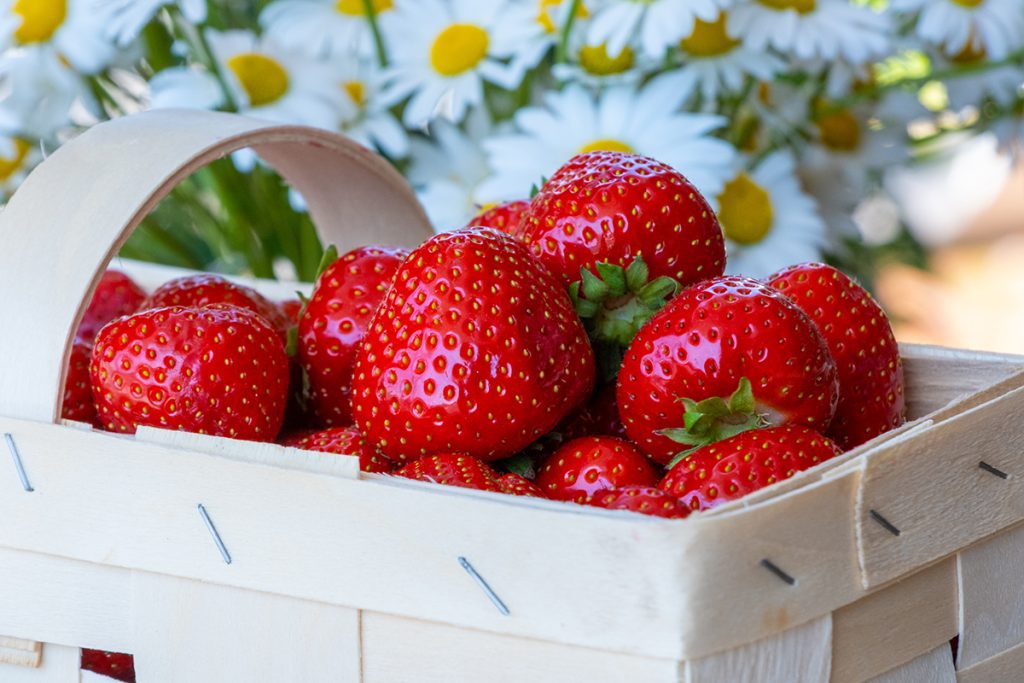
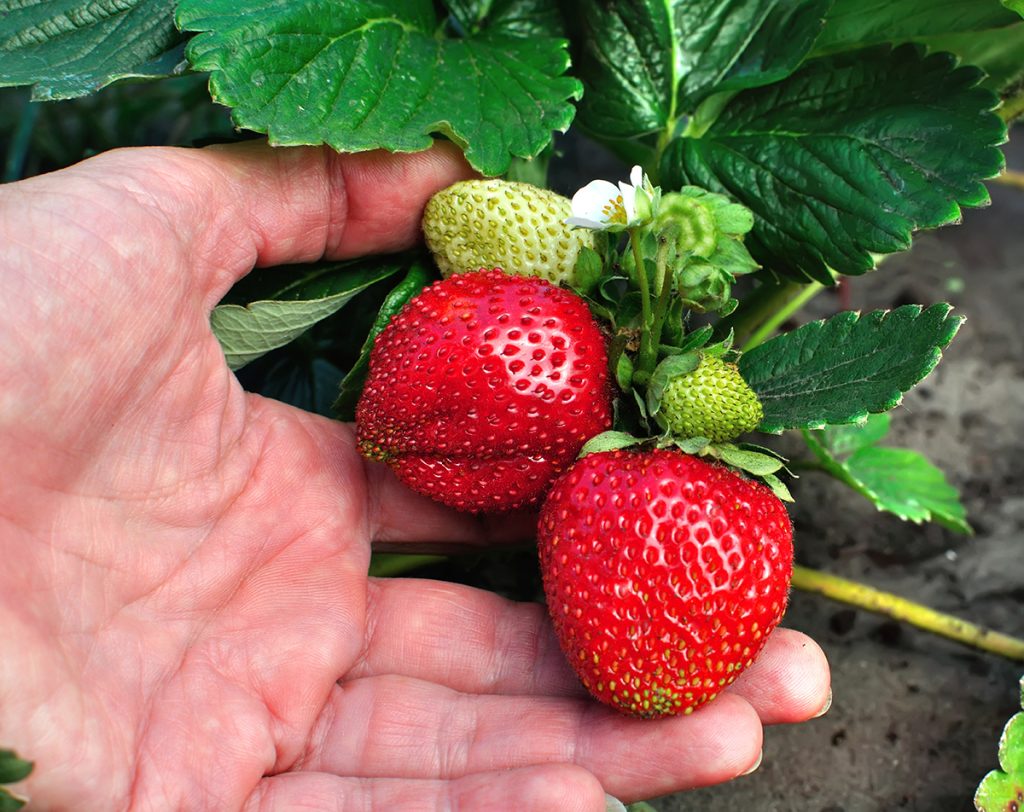
All-Star Strawberry
All Star strawberries are a standout variety renowned for their exceptional flavour profile, making them a favourite among berry enthusiasts. As a June-bearing type, All Star produces a concentrated harvest in late spring to early summer, with a few berries throughout the summer. These strawberries boast a perfect balance of sweetness and acidity, and a delightful aroma that entices the senses. When it comes to cultivation, All Star strawberries thrive in sunny locations with well-drained soil, rewarding you with robust plants and huge yields. Their vigorous growth habits and disease resistance make them a reliable choice for both backyard gardeners and berry farmers alike. Come harvest time, these berries reveal their deep red color, as a sign their prefect ripeness and sweetness. Whether enjoyed fresh, in desserts or preserved as jams and sauces, All Star strawberries always impress with their exquisite taste, making them a true star in the world of strawberries. Hardy to zone 3.

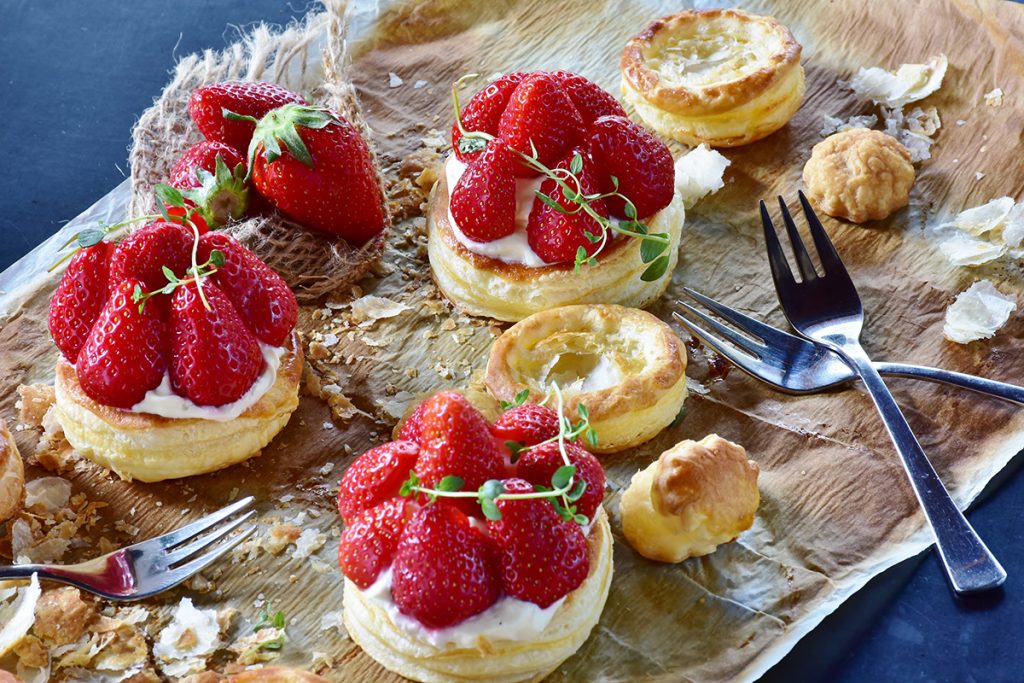
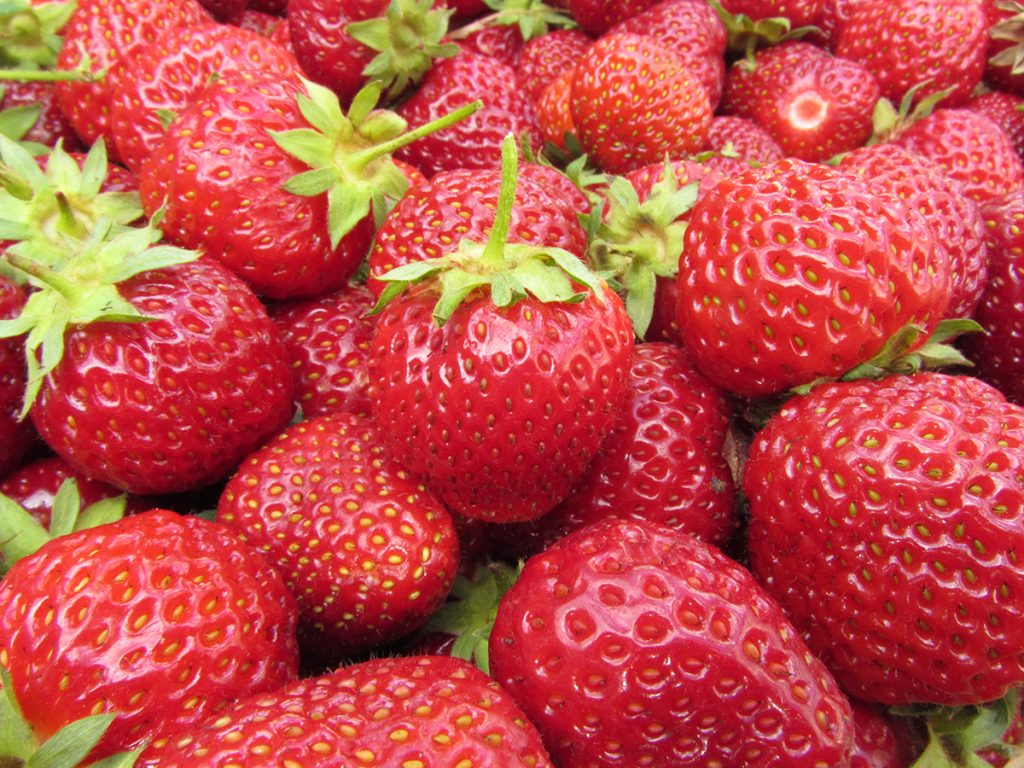
Flamingo White Strawberry
Flamingo strawberries are a delightful addition to any garden, renowned for their unique taste and appearance. As a June-bearing strawberry, Flamingo strawberries offer a large initial harvest followed by a few berries through to autumn. These berries boast a sweet and tangy flavour with a hint of pineapple, making them a favourite for fresh eating, desserts, and culinary creations. When it comes to cultivation, Flamingo strawberries thrive in sunny locations with well-drained soil, but they also tolerate partial shade, making them versatile for various garden settings. Their compact growth habit makes them ideal for small spaces or raised beds, while their disease resistance ensures a robust and healthy crop. Harvesting Flamingo strawberries is a joy, as their blushed pink- colour signals their ripeness and sweet flavour. Whether enjoyed straight from the garden or incorporated into your favourite recipes, Flamingo strawberries are sure to add a burst of sweetness and colour to your garden and kitchen alike. Hardy to zone 4.
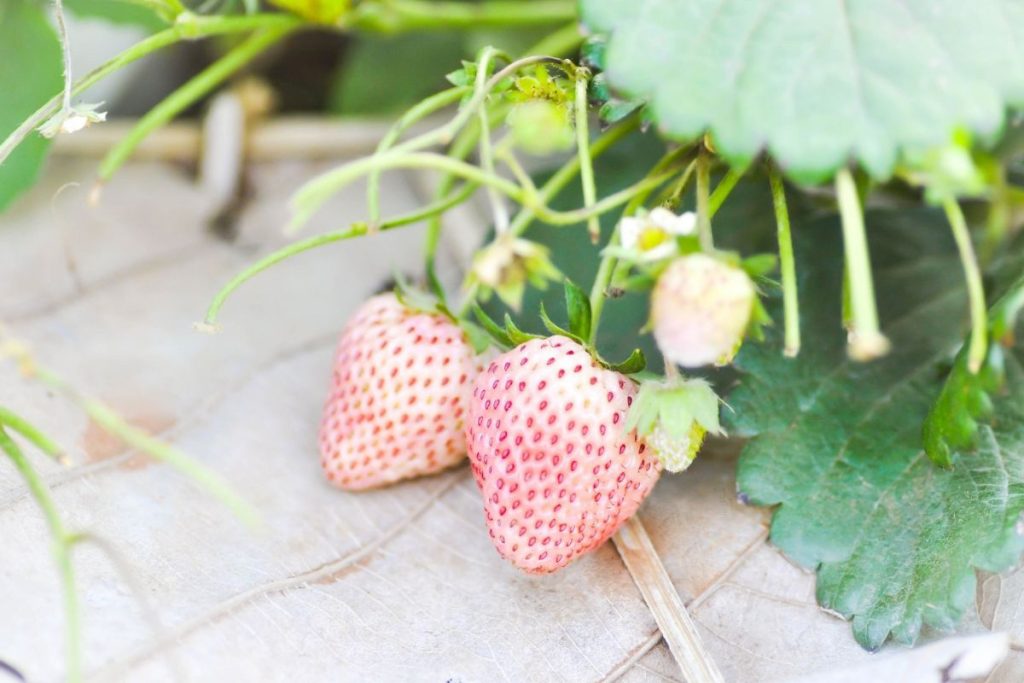
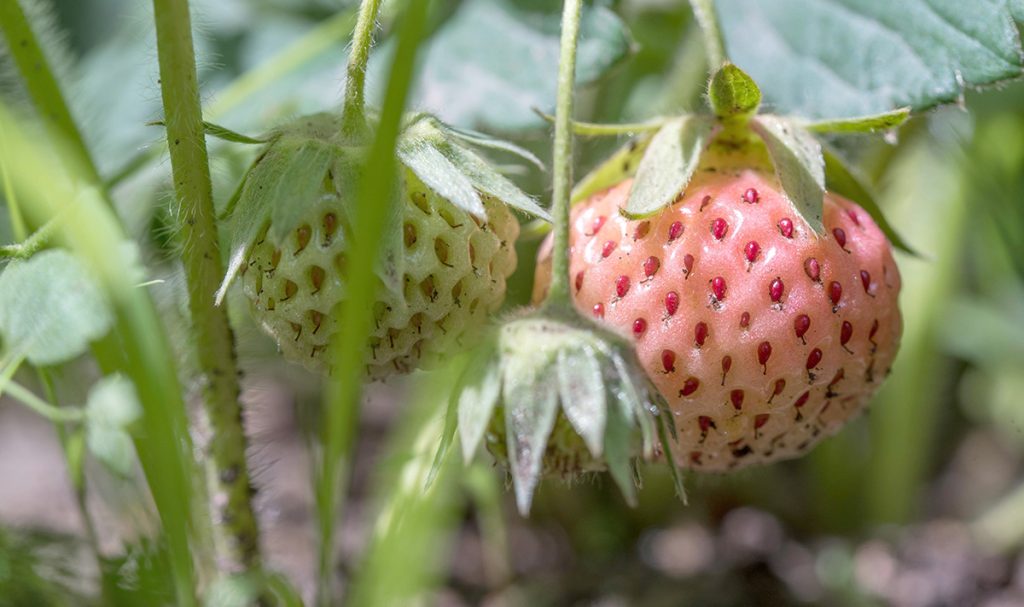
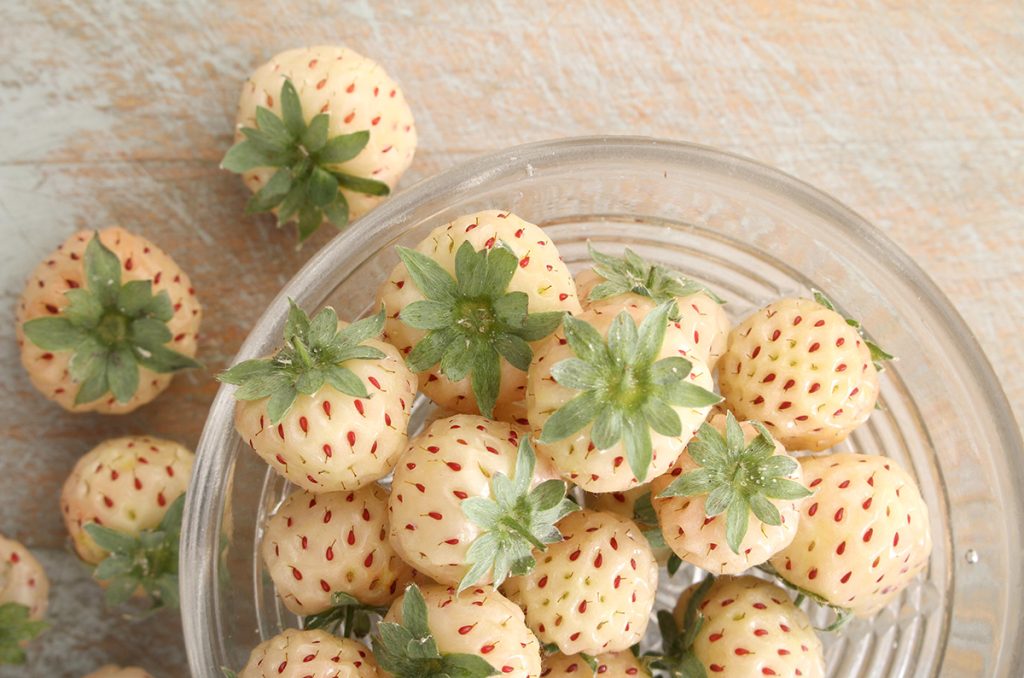
Kent Strawberries
Kent strawberries are a cherished variety celebrated for their exceptional flavour, making them a favourite among berry aficionados. As a type of June-bearing strawberry, Kent strawberries offer a concentrated harvest during late spring to early summer, delivering a burst of sweetness that captures the essence of the season. These berries boast a delightful combination of sweetness and tartness, with a rich, aromatic flavour that sets them apart. When it comes to cultivation, Kent strawberries thrive in sunny locations with well-drained soil, requiring regular watering and adequate spacing for optimal growth. Their vigorous growth habit and disease resistance make them well-suited for both home gardens and commercial farms. Harvesting Kent strawberries is a rewarding experience, as their deep red colour signals their peak ripeness and maximum flavour development. Whether enjoyed fresh, in salads, desserts, or preserved as jams and sauces, Kent strawberries are a real culinary delight. Hardy to zone 3.
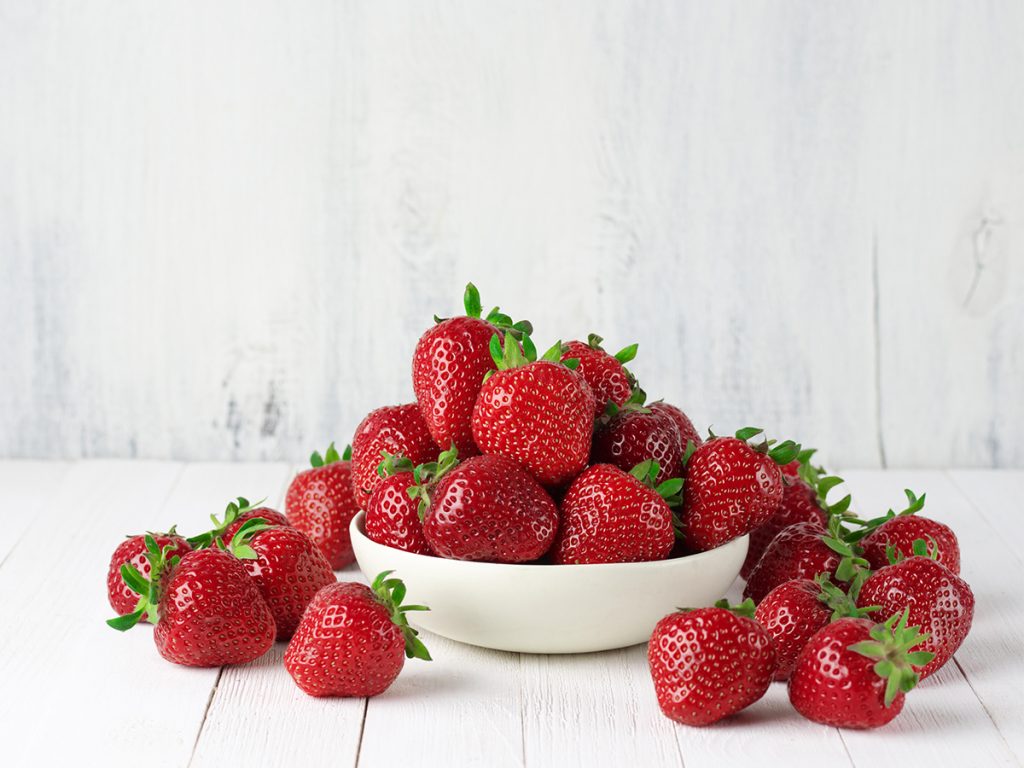
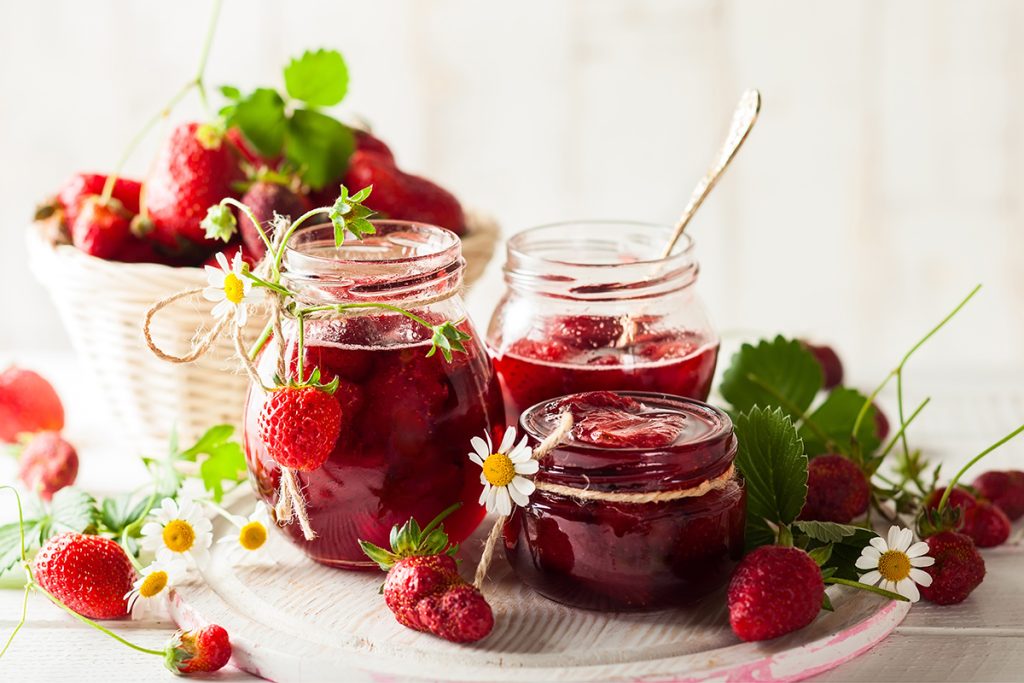
Strawberries – these little red wonders aren’t just fruits; they’re summer’s sweetest treasures, bursting with flavour and fun at every turn. Looking to add some healthy and vitamin-packed goodness to your fork or beauty you can harvest to your garden – add these world-renowned berries to your containers and borders. Whether you’re indulging in a fresh-picked gem or whipping up a strawberry sensation in the kitchen, these berries are like tiny packages of joy. If you’re a seasoned strawberry aficionado or just dipping your toes into the fruit world, remember to embrace the sweetness, savour the flavour, and let strawberries add a pop of fun to your plate and a smile to your face!


